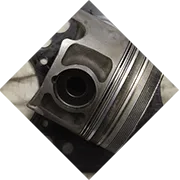solar panels for shed roof
Solar Panels for Shed Roof A Sustainable Energy Solution
As renewable energy continues to gain traction in households and businesses, more people are exploring the potential of solar panels as a viable energy solution. One innovative application of solar technology is the installation of solar panels on shed roofs. This not only utilizes otherwise underutilized space but also helps individuals save on energy costs and reduce their carbon footprint. In this article, we will explore the benefits, considerations, and installation process associated with solar panels for shed roofs.
Benefits of Solar Panels on Shed Roofs
1. Space Utilization Sheds are often overlooked when it comes to renewable energy solutions. By installing solar panels on a shed roof, homeowners can maximize their space efficiently. Sheds usually have ample roof area that can be leveraged to generate electricity without impacting the aesthetics of the main residence or other structures.
2. Cost-Effective Energy Production Utilizing solar panels can significantly reduce electricity bills. By generating your own power, you can lessen your dependence on the grid, particularly if the shed is located away from the house. This makes solar panels a smart investment, especially when considering rising energy costs.
3. Energy Independence Having solar panels on your shed allows you to produce your own energy, granting you more control over your power supply. This can be particularly useful for remote sheds or workshops used for gardening, hobbies, or other activities where access to electricity might be limited.
4. Environmental Impact Solar energy is a clean, renewable resource that contributes to a reduction in greenhouse gas emissions. By opting for solar panels, you contribute to a more sustainable future, promoting the use of fossil fuel alternatives. This is especially relevant in today’s climate-conscious society.
5. Increased Property Value The addition of solar panels can enhance the overall value of a property. Energy-efficient homes are increasingly attractive to buyers, and having a well-established solar energy system can be a significant selling point.
Considerations Before Installation
Before installing solar panels on your shed roof, it's essential to consider a few factors
1. Roof Orientation and Pitch The efficiency of solar panels is influenced by their orientation and the angle at which they are installed. Ideally, panels should face south in the Northern Hemisphere or north in the Southern Hemisphere for optimal sunlight exposure. Also, consider the pitch of the roof, as steeper roofs may increase efficiency.
2. Shade and Surroundings Ensure that there are no nearby trees or structures that might cast shadows on the solar panels. Excess shade can significantly decrease energy production and overall system efficiency.
solar panels for shed roof

3. Roof Condition Before installation, assess the condition of the shed roof. It's essential to ensure that the roof is in good shape to support the weight of the solar panels and that it can withstand any necessary installations without risking leaks or damage.
4. Local Regulations and Incentives Investigate local regulations regarding solar installations. Many areas offer incentives for installing solar panels, which could help offset initial costs. Before proceeding with your installation, ensure that you comply with any zoning laws or building codes.
Installation Process
Installing solar panels on a shed roof generally involves several steps
1. Site Assessment Begin with a detailed evaluation of the shed, focusing on roof orientation, shading, and structural integrity.
2. Choosing the Right Panels Select solar panels that meet your energy needs and fit within your budget. It's important to consider both efficiency and aesthetic value.
3. Installation This can be a DIY project if you possess the necessary skills and tools, but it's often recommended to hire a professional installer. A qualified technician will ensure that the system is installed correctly and safely.
4. Connection to Electrical System Once the panels are installed, they need to be connected to the shed's electrical system or directly to the grid, depending on your needs and setup.
5. Monitoring Performance After installation, regularly monitor the system’s performance to ensure that it operates efficiently. Many systems come with monitoring software that allows homeowners to track energy production and consumption.
Conclusion
Installing solar panels on a shed roof is a practical and environmentally friendly solution for generating renewable energy. With various benefits such as cost savings, increased property value, and energy independence, it’s a worthwhile consideration for anyone with an unused shed. By carefully assessing conditions and following the installation process, you can transform your shed into an eco-friendly power source.
-
String Solar Inverter: The High-Efficiency Solution for Smart Solar EnergyNewsJul.14,2025
-
Revolutionizing Rooftop Energy with the Power of the Micro Solar InverterNewsJul.14,2025
-
Power Independence with Smart Off Grid Solar Inverter SolutionsNewsJul.14,2025
-
On Grid Solar Inverter: Powering the Future with Smart Grid IntegrationNewsJul.14,2025
-
Monocrystalline Solar Panels: High-Efficiency Power for the Future of Clean EnergyNewsJul.14,2025
-
Bifacial Solar Panel: A Smarter Investment for Next-Generation Energy SystemsNewsJul.14,2025







